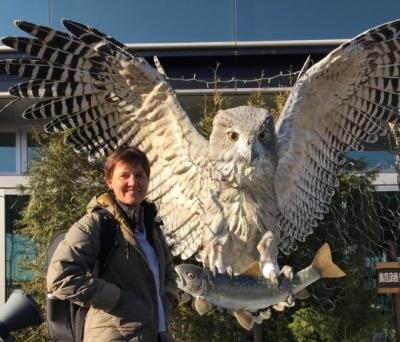Susan Myers shares her love of reptiles and amphibians
If you’ve travelled with me in the past, you are no doubt aware that after birds, my other passion is reptiles and amphibians. The art of searching for these amazing animals is known as herping and I’ve spent much of the last few months flipping rocks, road cruising and spotlighting as I herp around the US. When I’m leading in Asia, I’ll often stay a few days before or after a tour in order to go herping, and sometimes when time allows, I’ll take people out for some after-birding herping in some of the most reptile rich places on earth.
Right before we were hit with this pesky pandemic, I managed to squeeze in a week of herping in Goa, India where myself and two Indian herpetologist friends found King Cobras, pit vipers, endemic geckoes, and unique frogs.
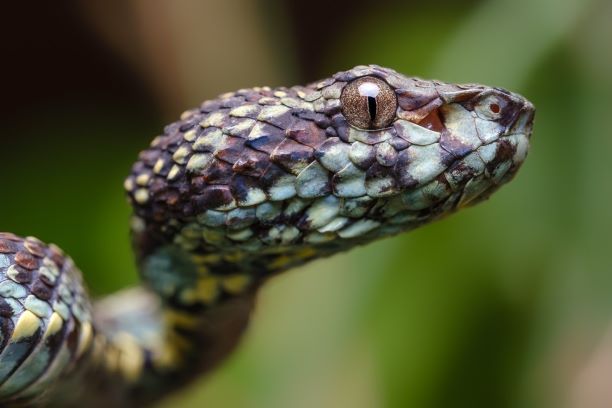
This stunning Malabar Pit Viper Trimeresurus malabaricus was definitely my favourite find.
And last year, I spent quite a bit of time herping in Borneo, where reptiles such as Paradise Gliding Snake and frogs such as Hole-in-the-head Frog beckon.
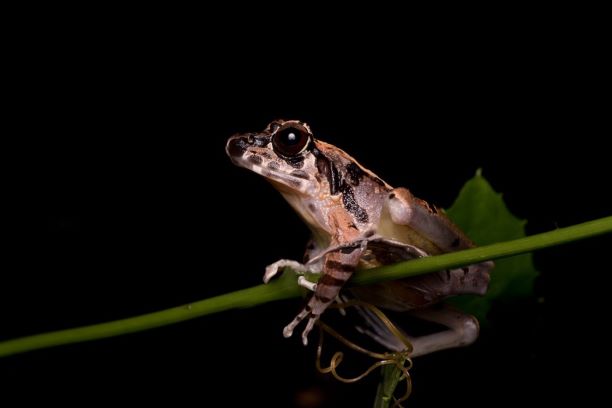
The Hole-in-the-head Frog Huia cavitympanum is the only non-mammal vertebrate to use ultrasonic communication!
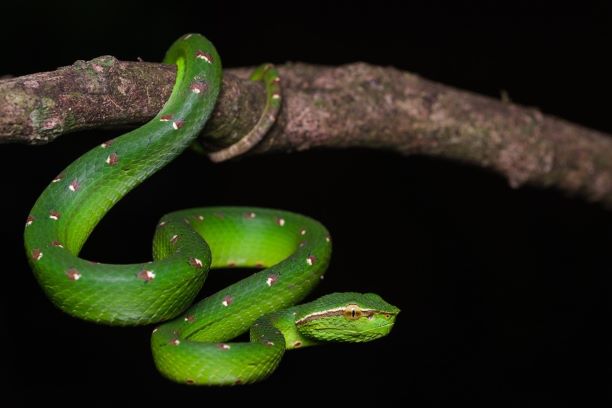
But without doubt my favourite Asian herps are the arboreal pit vipers. Just look at this stunning little male Bornean Keeled Pit Viper Tropidolaemus subannulatus.
Moving into the more recent past, I’ve had a lot of fun right here in the US searching for snakes, lizards, frogs and salamanders in various places over the last few months. Here are some of my favourites…
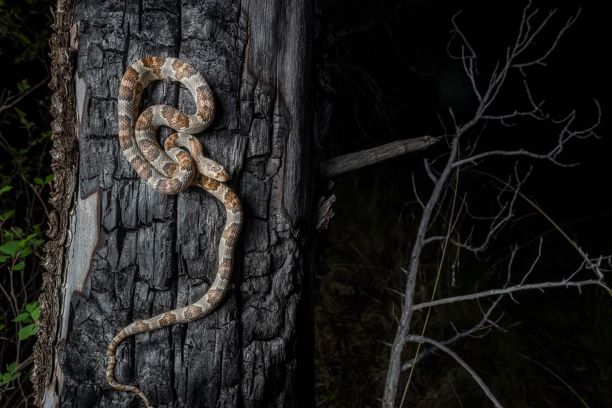
Sonoran Lyre Snake Trimorphodon lambda is found through in Mexico, Arizona and just into Southern California, Nevada and Utah. They are nocturnal and mostly terrestrial, but also good climbers as you can see! The name comes from the lyre-shaped pattern on the top of the head.
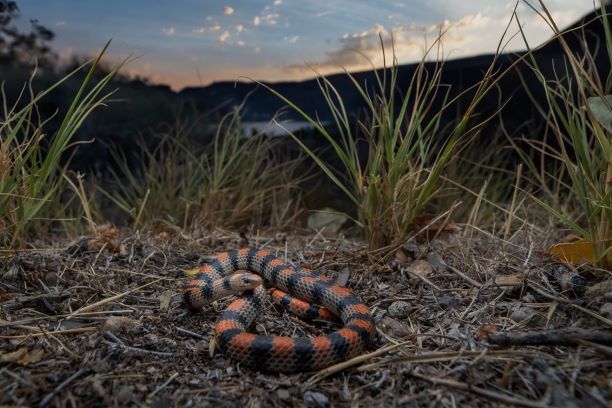
Ground Snake Sonora semiannulata
This gorgeous little snake is highly variable, but my friends and I got lucky and found the most attractive of them, the orange and black banded form.
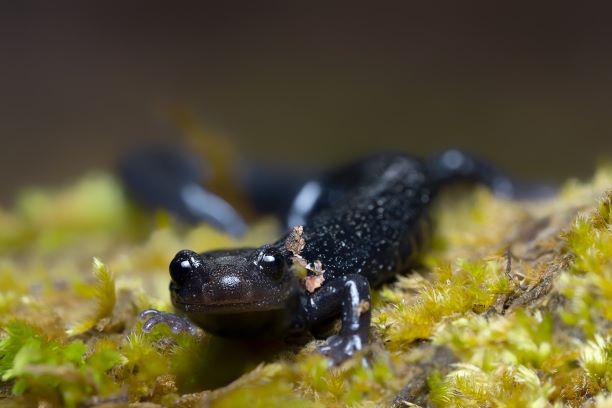
Shasta Black Salamander Aneides jecanus
We were told by local experts that we had no chance of finding this little fella, but I flipped a log and there they were! This very localised sally is one of the so-called lungless Plethodontid salamanders that do not breathe through lungs. They conduct respiration through their skin and the tissues lining their mouth. This requires them to live in damp environments on land and to move about on the ground only during times of high humidity.
But to me, the rattlesnakes are the pinnacle of American reptiles! They are beautiful, unique and, despite what you may think due to centuries of bad press, gentle and shy. I love photographing them…
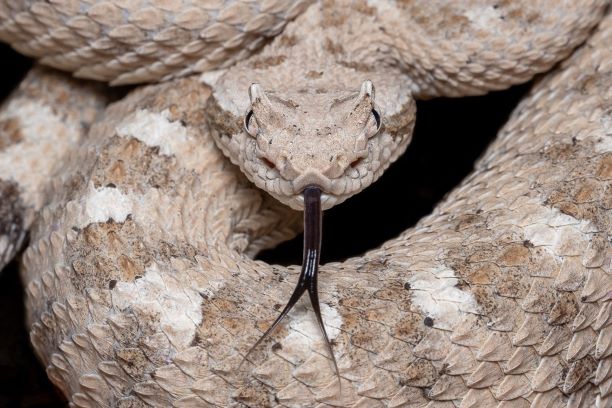
Sidewinder Crotalus cerastes
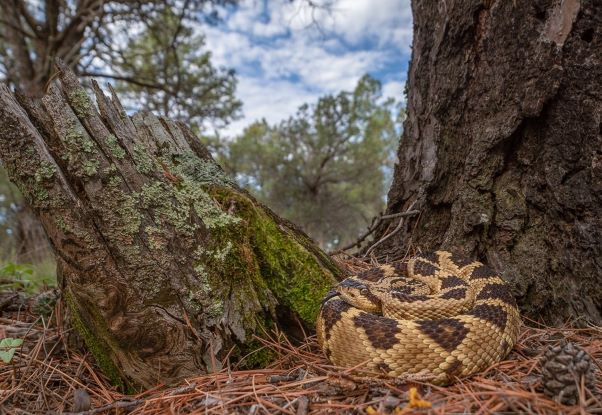
Black-tailed Rattlesnake Crotalus molussu
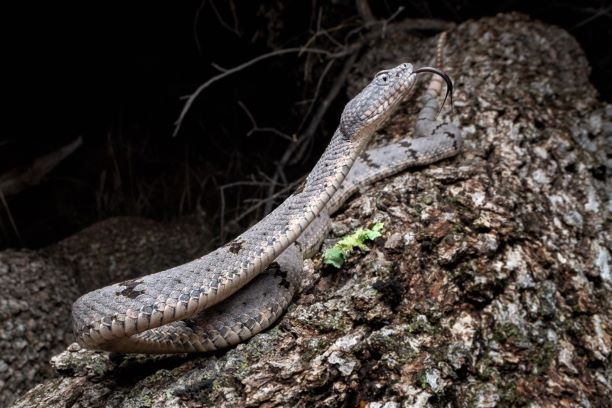
Rock Rattlesnake Crotalus Lepidus
Susan Myers Sept 2020
